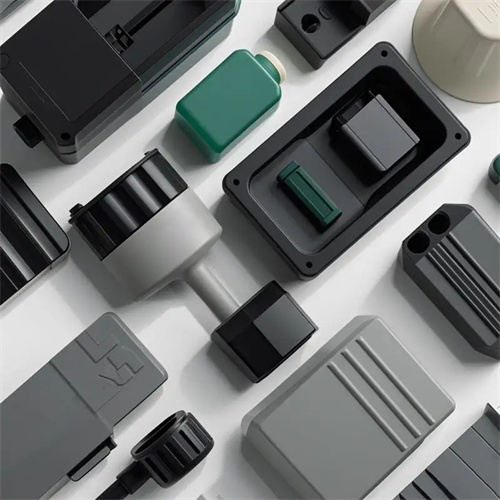Injection molding anti-delay (screw loosening amount)
The injection molding anti-slip margin, also known as screw back-out, is a critical process parameter in the injection molding process. It refers to the distance the screw moves back after the injection phase. Setting this seemingly simple parameter has a direct and significant impact on injection molding stability, part quality, and raw material utilization. In actual production, an improperly set anti-slip margin can cause melt flow at the nozzle—uncontrolled plastic melt flow from the nozzle. This not only wastes raw material, but also contaminates the mold and equipment, and even affects the dimensional accuracy of the molded part. Conversely, a reasonable anti-slip margin can effectively prevent flow, ensure accurate injection volume, and lay a good foundation for subsequent pressure holding and cooling steps.

To understand the role of the injection molding anti-slip margin, it’s first important to understand its timing within the injection molding cycle. After the screw completes an injection stroke, the melt within the barrel retains a certain level of pressure. If the screw is not retracted, this residual pressure forces the melt to continue flowing out of the nozzle, resulting in flow. The anti-slip margin is designed to reduce the pressure at the front end of the barrel by moving the screw backward, releasing the pressure on the melt at the nozzle and preventing flow. Furthermore, the screw’s retraction allows the melt within the barrel room to expand, reducing internal stresses caused by excessive pressure. This has positive implications for improving the mechanical properties of the molded part and minimizing defects such as warping and cracking. For example, when molding highly fluid materials like polyethylene and polypropylene, failing to set an appropriate anti-slip margin can significantly increase flow, severely impacting production continuity and part quality.

The injection molding anti-slip setting needs to be adjusted according to the specific characteristics of the plastic raw material. Different plastics have different fluidity, viscosity, and thermal stability, which directly determine the amount of anti-slip. Plastics with good fluidity and low viscosity, such as nylon and polyethylene, are more susceptible to flow when subjected to pressure in the barrel. Therefore, a larger anti-slip setting, typically between 3-5mm, is required to ensure effective pressure relief and prevent melt outflow. Plastics with poor fluidity and high viscosity, such as polycarbonate and polyoxymethylene, are less prone to flow, and the anti-slip setting can be smaller, typically between 1-3mm. Furthermore, the thermal stability of the plastic must be considered. For plastics with poor thermal stability, such as polyvinyl chloride, excessive screw backing can cause the raw material to remain in the barrel for an extended period of time, leading to decomposition. Therefore, when setting the anti-slip setting, it is necessary to combine it with other parameters such as the melt speed to prevent raw material decomposition from affecting part quality.

In addition to raw material properties, part structure and dimensions also significantly influence the setting of the injection molding anti-slip margin. Large parts or those with thicker walls require larger shot sizes, resulting in higher melt pressure within the barrel. In these cases, a larger anti-slip margin is needed to relieve pressure and prevent flow. On the other hand, smaller parts or those with thinner walls require smaller shot sizes and relatively lower barrel pressure, so the anti-slip margin can be appropriately reduced. Furthermore, part precision requirements also influence the setting of the anti-slip margin. High-precision parts require extremely accurate shot sizes. Even slight deviations in the anti-slip margin can cause shot size fluctuations, impacting part dimensional accuracy. Therefore, when producing high-precision parts, the anti-slip margin must be precisely adjusted through multiple mold trials to ensure that it effectively prevents flow without compromising shot size stability due to excessive backflow. For example, when producing precision parts such as electronic connectors, the anti-slip margin must be kept within 0.1mm to ensure the required dimensional accuracy.

In actual production, the injection molding anti-slip setting must be optimized based on specific equipment performance and production conditions. Different brands and models of injection molding machines vary in screw and barrel structure, as well as hydraulic system performance. This can lead to varying results even with the same anti-slip setting. Therefore, during commissioning, first refer to the recommended values in the equipment manual. Then, fine-tune the setting by observing flow, part weight fluctuations, and appearance quality during mold trials. If nozzle flow is observed during mold trials, the anti-slip setting is insufficient and should be increased. If injection volume is unstable and part weight fluctuates significantly, the anti-slip setting may be excessive and should be reduced. Furthermore, careful coordination of the anti-slip setting with parameters such as injection speed and holding pressure is crucial. Only when these parameters work together can a stable injection molding process be achieved. Through continuous exploration and optimization, finding the optimal anti-slip setting for specific production conditions can not only improve production efficiency and reduce raw material waste, but also significantly enhance the quality and consistency of the molded parts.
